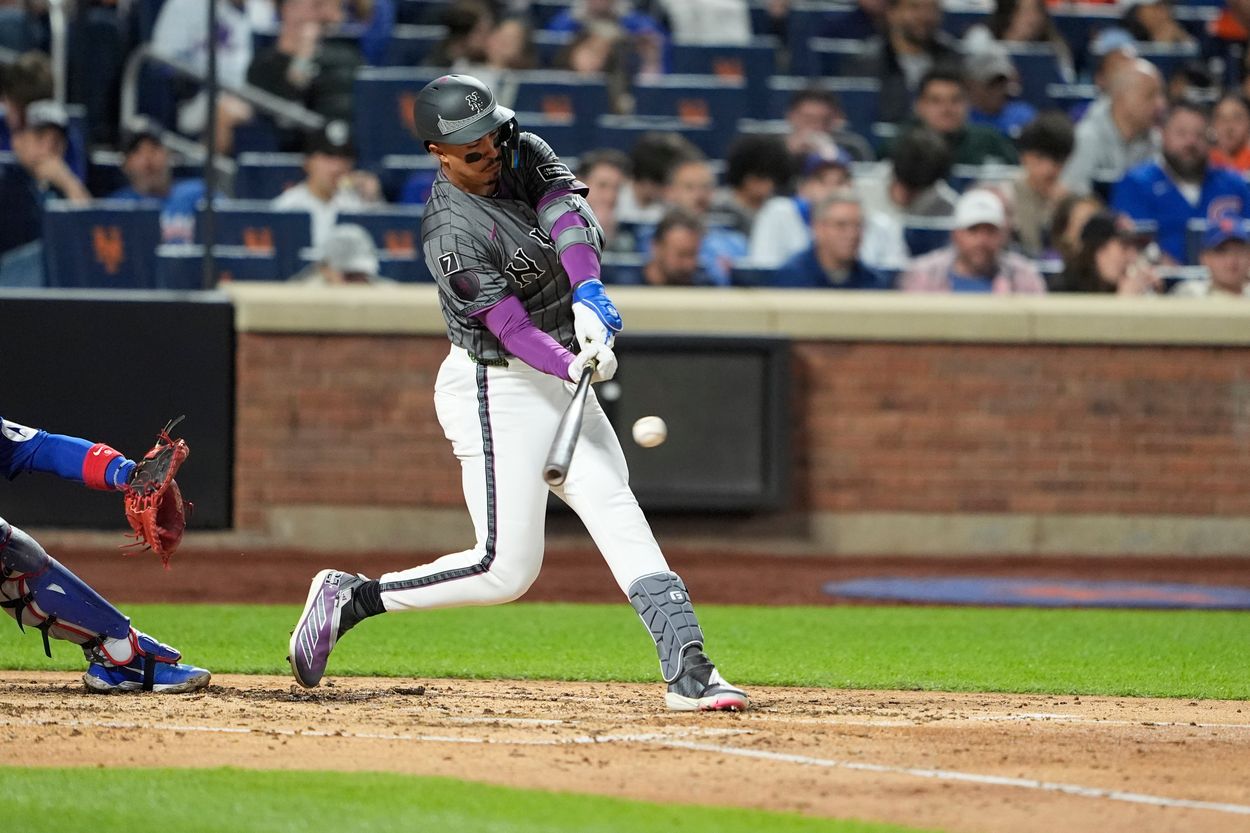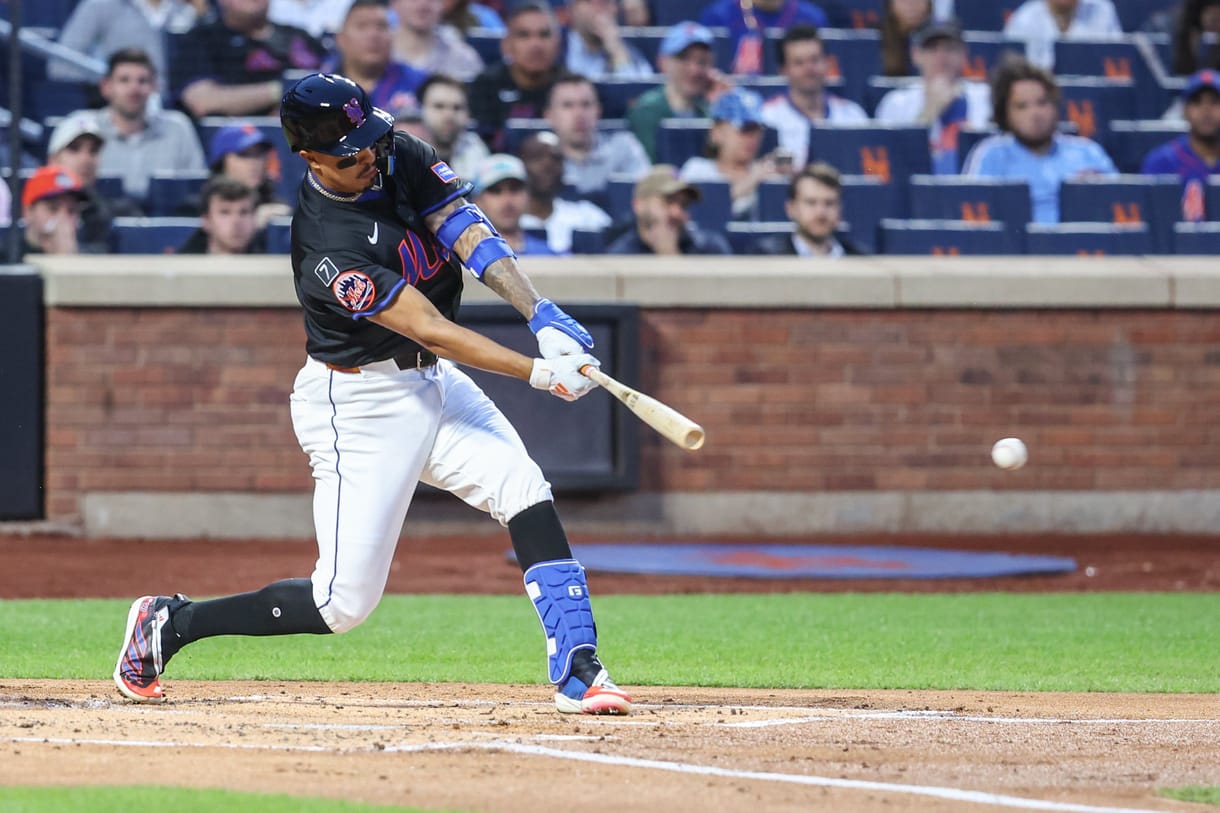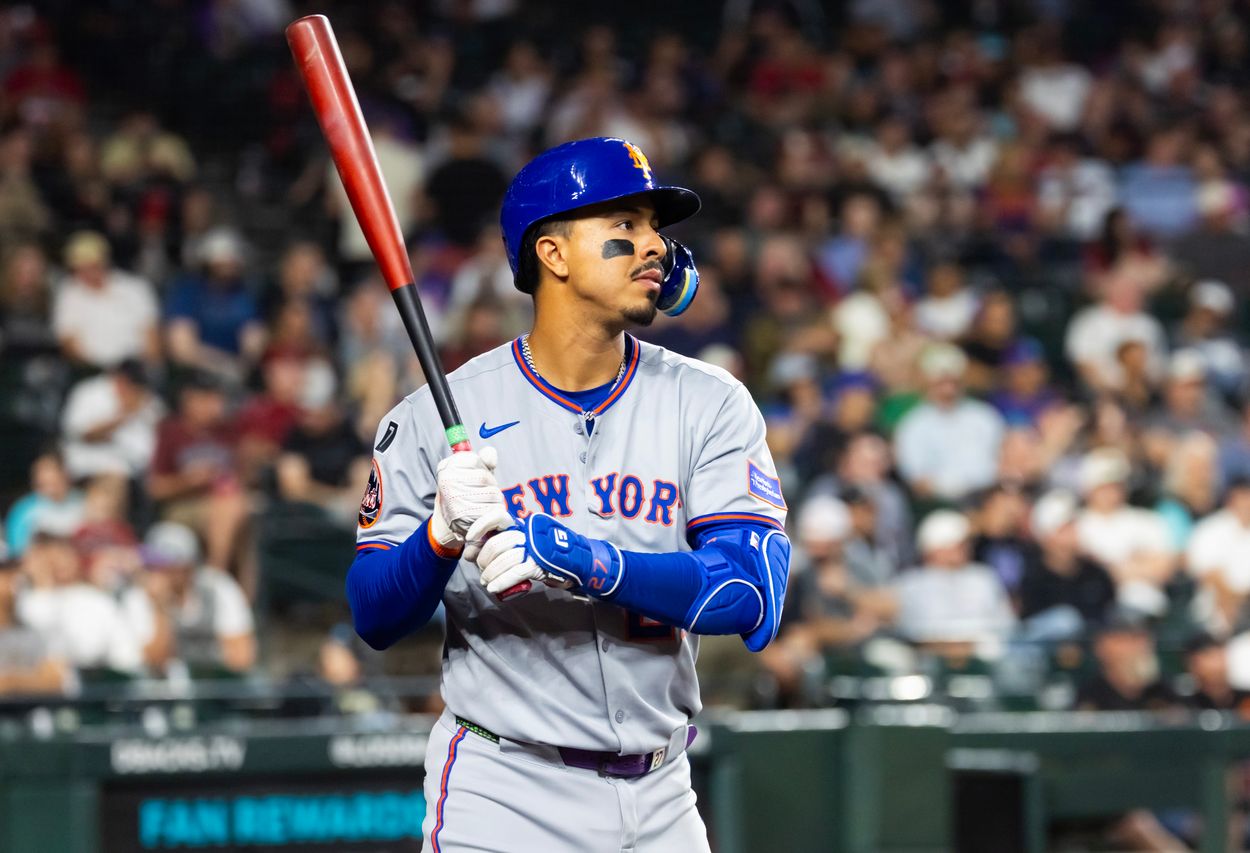
Some position battles resolve themselves. Others grow more complicated with every game, especially when one struggling bat starts to show signs of life.
That’s the situation the New York Mets are facing at third base, where clarity has remained elusive—but opportunity keeps knocking.
They’ve been searching for a long-term answer at the hot corner, and while the defense hasn’t stabilized, a once-cold bat is starting to warm.

Defensive concerns remain impossible to ignore
Mark Vientos had every chance to seize the third base job this season, but the glove hasn’t held up its end.
Through 281 innings at third, he’s posted a .962 fielding percentage, racking up -5 defensive runs saved and -4 outs above average.
Those numbers don’t just suggest struggles—they scream them.
For a team hoping to stay competitive in a tight NL East race, that level of defensive liability can’t go unchecked.
That’s why Brett Baty was brought back into the fold, and he wasted no time proving his value.
A big game reignites the Baty buzz
On Saturday, Baty delivered a two-homer, five-RBI performance in the Mets’ 6–5 win over the Cubs.
It was the kind of breakout showing the front office had been hoping to see when he was drafted.
Baty’s upside at third base, both offensively and defensively, gives the Mets a more balanced option.
And yet, Vientos isn’t fading quietly.
His bat, long viewed as his calling card, is beginning to flash once again—just as the lineup decisions were starting to solidify.

A bat on the rise complicates the puzzle
Over his last 15 days, Vientos is hitting .292 with a .352 on-base percentage and a .417 slugging rate.
Those numbers include two home runs and a noticeable improvement in quality of contact.
For the season, he’s still lagging behind—his .227/.304/.371 slash line remains below league average across the board.
But the recent trend suggests something’s changing.
He added two more hits and two runs scored in Saturday’s loss to Chicago, proving he’s not just padding stats—he’s producing in real time.
The Mets have options—but few easy answers
Vientos’s glove might make him unplayable at third, but his bat could earn him time at designated hitter or even at first base on occasion.
If his power returns to last year’s form—27 homers in 111 games—the Mets won’t be able to keep him out of the lineup for long.
That creates a lineup shuffle, with Baty getting starts at third and Vientos possibly sliding into DH duties on days where matchups make sense.
It’s not a perfect situation, but it’s a far better problem than lacking bats altogether.
The future hinges on power and production
If Vientos can recapture his full power stroke, the Mets will find ways to work him in—glove issues and all.
That kind of offensive upside is hard to ignore, especially with few other right-handed sluggers producing consistently.
For now, the Mets are keeping both players close, knowing each brings something the other lacks.
And if Vientos keeps hitting, the debate over who stays in the lineup may only get louder.
Popular Reading
Mets’ under-the-radar bullpen pickup is dominating — and his 1.13 ERA is hard to ignore
!function(){var g=window;g.googletag=g.googletag||{},g.googletag.cmd=g.googletag.cmd||[],g.googletag.cmd.push(function(){g.googletag.pubads().setTargeting(“has-featured-video”,”true”)})}();var _bp=_bp||[];_bp.push({“div”:”Brid_2118159″,”obj”:{“id”:”30505″,”width”:”1280″,”height”:”720″,”stickyDirection”:”below”,”video”:”2118159″,”poster”:”https://empiresportsmedia.com/wp-content/plugins/tpd-addons/blocks/featured-video/src/img/1×1-white.png”}});https://player.target-video.com/player/build/targetvideo.min.js